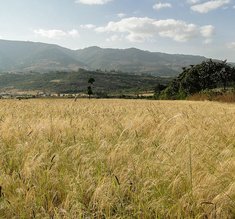|
Description
|
Term
|
|
That which individuals and firms might hold (not save) so as to facilitate transactions (largely dependent on income), ensure liquidity as a precautionary measure against sudden payments or opportunities (largely influenced by the interest rate), and to speculate on the future value of financial assets (largely determined by the interest rate and the price of said assets)
|
Money
|
|
That which governments try to achieve via monetary stability such as maintaining a low and stable inflation rate, financial stability such as maintaining sufficient liquidity, fiscal stability such as reducing fiscal deficits and the national debt, and policies allowing for the accommodation of external shocks
|
Macroeconomic Stability
|
|
That which a government does by selling government bonds to the central bank, commercial banks, or the non-bank private sector
|
Borrow
|
|
A Bangladeshi microfinance initiative, the first of its kind in the world, which has generated employment, reduced inactivity, and raised income and living conditions particuarly for women
|
Grameen Bank
|
|
A process by which government expenditure and revenue varies with the business cycle, thereby helping to stabilise the economy without conscious government intervention
|
Automatic Stabilisers
|
|
That which globalisation may reduce by increasing the availability of cheap imports
|
Inflationary Pressure
|
|
That type of tax the advantages of which are that they provide a high yield, are relatively cheap and convenient to collect, are often progressive, and are automatic stabilisers
|
Direct Taxes
|
|
Those the presence of which is less developed countries can be disadvantageous as they can lead to a net currency outflow, a lack of employment due to using capital-intensive rather than labour-intensive methods, and negative externalities such as child labour, pollution, and depletion of non-renewable resources due to looser regulations
|
Multinational Corporations
|
|
Those two things which a country may use when policy measures (supply side, etc.) are insufficient to achieve macroeconomic objectives, alphabetically
|
Controls and Regulations
|
|
A preference to save money for consumption later, the reward for doing so being the real interest rate (negative in the UK since 2009)
|
Deferred gratification
|
|
|
Description
|
Term
|
|
A hump shaped curve plotting tax revenue against the tax rate showing that such revenues increase as the rate does up to the point when people's incentives to work are reduced sufficiently that the relationship becomes inverse
|
Laffer Curve
|
|
The total government debt owed by a country, based on accumulated previous deficits and surpluses
|
National Debt
|
|
Those objectives of the government the principal examples of which are to ensure international competitiveness, an acceptable distribution of income and wealth, and to achieve sustainable economic growth in part by maintaining economic stability
|
Macroeconomic Objectives
|
|
That type of policy the government must balance with allowing automatic stabilisers to work as if it is used too much it could result in recession or overheating
|
Discretionary Fiscal Policy
|
|
Those products the prices of which are volatile - making income forecasts for those economies reliant on them unreliable - because of the development of substitutes (aluminium replacing tin), weather, inelastic demand and supply making price vulnerable to changes in such, depletion and discovery rates of resources, and demand being heavily reliant on the performance of developed and some emerging economies
|
Primary Products
|
|
That type of policy the primary objective of which are sustainable economic growth, the alleviation of poverty and inequality, macroeconomic stability, full employment, improving international competitiveness and a reasonable balance of payments position, and to correct market failure
|
Macroeconomic Policy
|
|
A model of how real goods and services, and money flows in the economy, there being long-term equilibrium whereby withdrawals (W) = injections (J)
|
Circular Flow of Income
|
|
That type of good, the reliance on which by less developed countries is problematic as they face price volatility, a lack of efficiency gains may harm the terms of trade, and isolated rural areas have little knowledge of what is a good price to sell their crop to traders for, leading to exploitation
|
Primary Goods
|
|
That which constrains the use of fiscal policy as it may place downward pressure on tax rates by necessitating competition in tax rates between countries, limiting the way in which said policy can be used
|
Globalisation
|
|
Countries with very low income in which a high proportion of the labour force is employed in primary production, such as Afghanistan or the Central African Republic
|
Less Developed Countries
|
|

